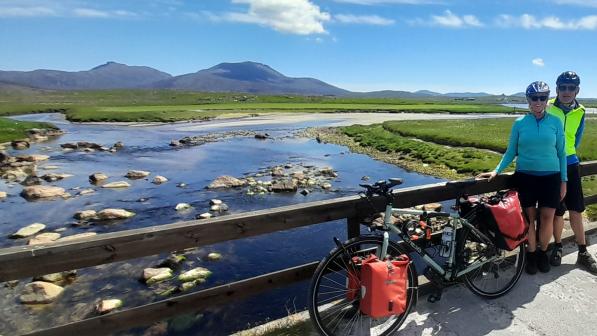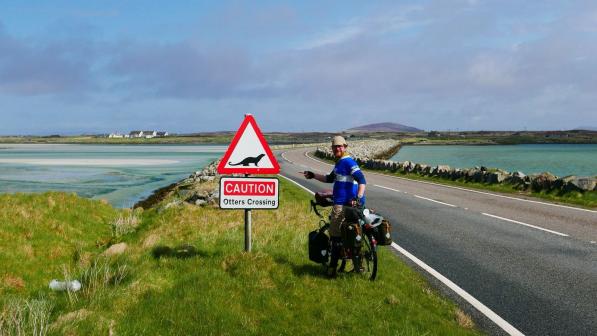GPX file of The Hebridean Way

Sam Jones is Cycling UK's Senior Campaigns and Communications officer, and when he's not busy campaigning to improve cycling he's out on his bike exploring. In May 2018, he headed to the Outer Hebrides and shares here his ride along the Hebridean Way.
The Hebridean Way has it all: stunning white beaches, dramatic mountain landscape, flat boggy landscape, great and bad weather, standing stones to rival Stonehenge at Callanish, otters and of course Harris Tweed.
For a regular cyclist looking for a multi-day tour it’s an ideal introduction as you can take your time and soak in what is surely one of the most beautiful spots in the whole of the UK. Equally, the route can appeal to the race lean whippet, looking for an exciting challenge of cycling the islands end to end in such time as to catch the Caledonian MacBrayne operated ferries (see Cycling UK’s ferry guide for more information).
I rode the route in late early May when there are less midgies, and also less motor traffic. In the peak summer months, the islands is incredibly popular and as a cyclist it can feel a little claustrophobic sharing the narrow roads with large motorhomes.
The prevailing wind is south to north, and it will blow hard – we encountered day long winds as strong as 45mph – so if camping bring a storm ready tent and be prepared to factor in some forced rest days.
Arriving in Castlebay in Barra after a five hour ferry ride from Oban, turn left at the top of the gangway and follow the road to Vatersay if you want to make it a proper “end to end”. There’s an idyllic camping spot just above a white sandy beach overlooking the island of Sandray. Wake in the morning, and more or less just follow your compass as it points north.
With its Caribbean-esque beaches and rolling landscape, you’ll wish Barra lasted longer, particularly as you cycle through the largely flatlands of the Uists and Benbecula. Harris was the highlight for me, with its crofts still producing the king of fabrics, the dreamy sands of Luskentyre and a more mountainous landscape to test you. One mighty thigh sapping effort is required to take you into Lewis, which is sadly more bleak but regularly rolling until the Butt of Lewis, the most western place of Europe.
One note to the traveller be prepared for most places outside of large towns being closed on a Sunday!

